The best laptops for graphic design: Top picks and buying advice
 [ad_1]
[ad_1]
Whether you’re creating a sleek new logo for your company or a magazine cover that’s popping with bright colors and interesting shapes, graphic designers need the right kind of laptop to get the job done. The most important thing is powerful hardware. For tasks like 3D modeling, you’re going to need a powerful CPU and a good amount of RAM. Depending on the size and complexity of the project, you may need a processor with multiple cores. Another essential piece of hardware is the graphics card. This is important if you’re working with massive textures.
If you’re not sure where to begin your search, don’t worry. We’ve assembled a list of top picks. Not only are these machines graphically powerful, but they’ve also got awesome screens for those times when detail and color accuracy are paramount. We’ve also included options at different price points. So, whatever your budget may be, we’ve got something for every type of graphic designer. If you’re looking for something different, be sure to check out our comprehensive roundup of the best laptops for all purposes.
Updated 07/18/2022 Check out our latest review of the Dell XPS 15. Including a stellar OLED display and the latest Intel CPU and GeForce RTX graphics, this laptop is perfect for content creators.
Asus VivoBook Pro 16X OLED – Best overall
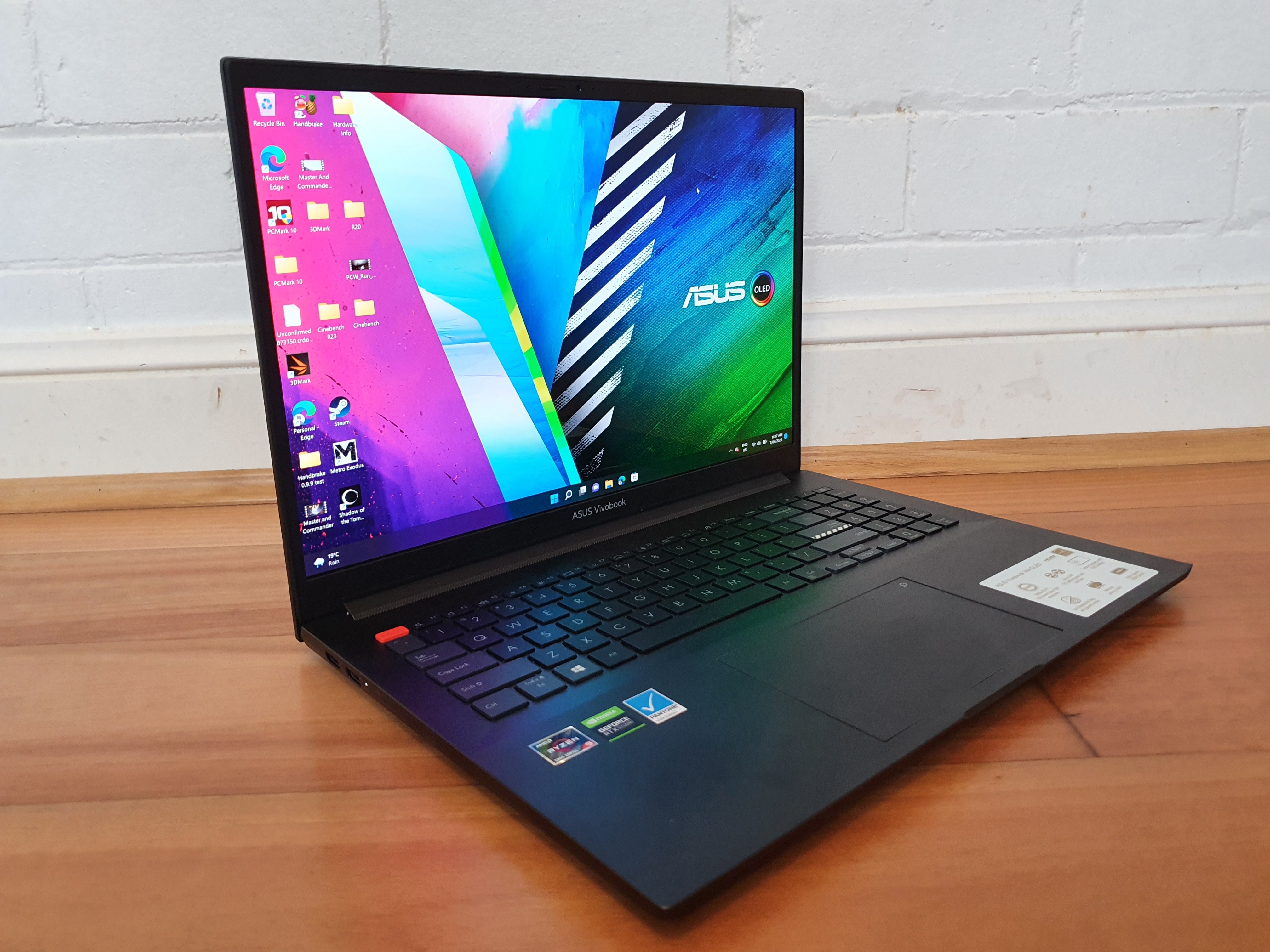
Pros
- Beautiful 4K OLED display
- Long battery life
- Useful DialPad tool
Cons
- Design lacks flair
- Lackluster webcam
Graphic designers need a high-quality display for their projects, which is why you should consider picking up the Asus VivoBook Pro 16X OLED. The 4K OLED display is absolutely stunning, as it produces vibrant colors and deep blacks. It’s also a good option for those who suffer from eye strain and tension headaches. If you’re to spend hours peering into a display, it might as well be a top-quality one. The VivoBook also packs a decent punch in the processing department.
The CPU is the Ryzen 9 5900HX, which should be plenty zippy for basic graphic design needs and general use. It also has 32GB of RAM and a whopping 1TB of PCIe NVMe M.2 SSD storage. That’s sufficient enough for multitasking or firing up a couple of applications simultaneously. There are a couple of trade-offs you should be aware of like the lackluster webcam and the temperamental fingerprint reader. Those shortcomings are fairly small, though. Overall, the VivoBook Pro is a great machine that any graphic designer would love.
MSI GF76 Katana – Best value
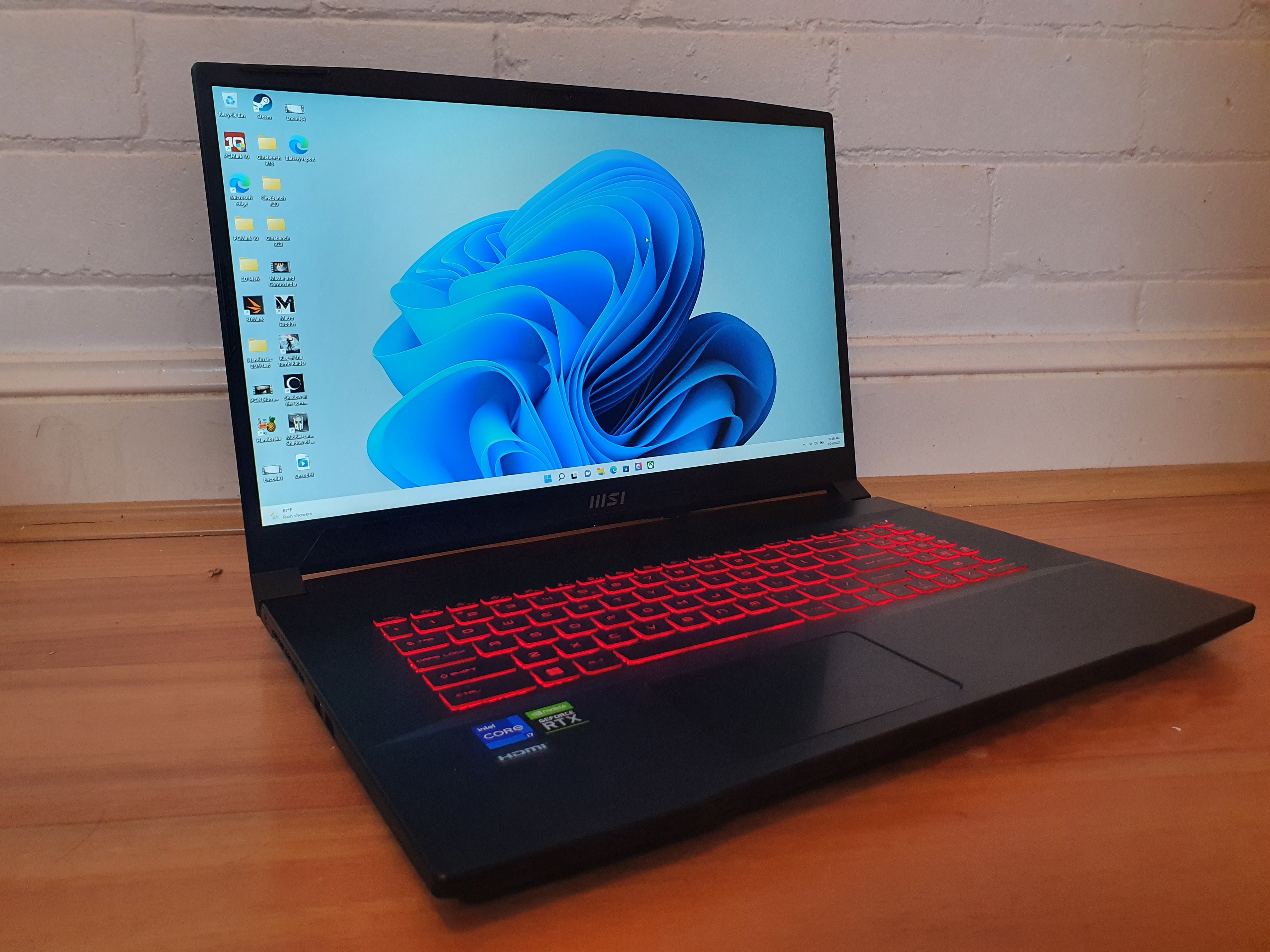
Pros
- Decent CPU performance
- Interesting design with plenty of flair
- Comfortable keyboard and trackpad
Cons
- Lackluster GPU performance
- The display lacks brightness
- Audio produces less-than-stellar bass
If you’re working with an inflexible budget, the MSI GF76 Katana is the best bang for your buck. It comes with an Intel Core i7-12700H CPU, an Nvidia GeForce RTX 3050Ti GPU, 16GB of RAM, and 512GB of PCle 4 SSD storage. In other words, this machine should be able to handle most design tasks with relative ease as well as everyday workloads. The GPU is a little underwhelming when running newer games, but MSI offers up to seven different configurations, so you can always chose a more powerful option. The display is also dimmer than we like, but it’s 17.3-inches and that’s a lot of screen real estate to work on. So, if you’re a beginner graphic designer looking to save some money, you should definitely consider the GF76 Katana.
Razer Blade 17 (2022) – Best for video game designers
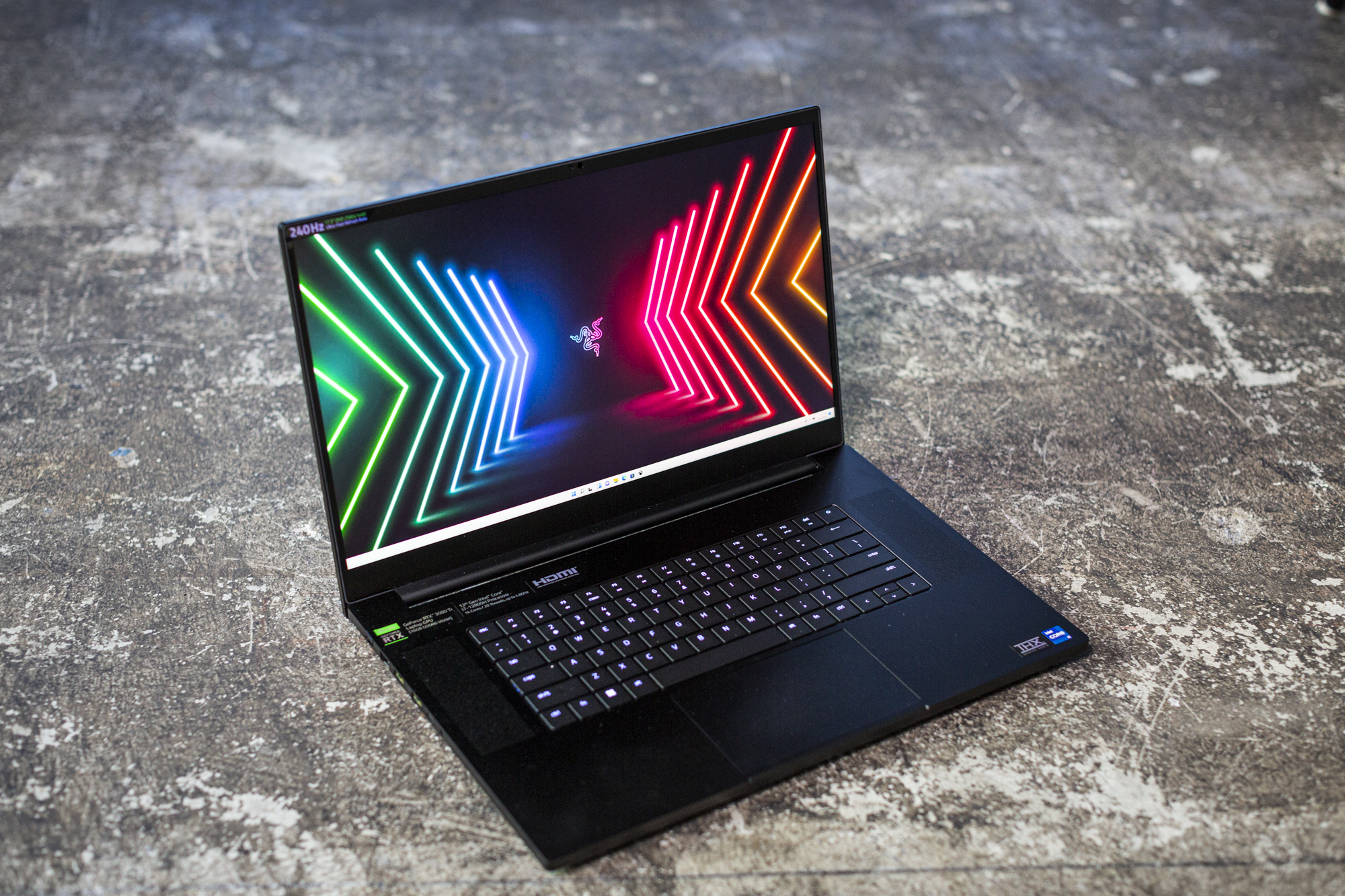
Pros
- Huge 17-inch screen in a relatively compact laptop
- Intel’s newest 11th-gen CPU and Nvidia RTX graphics
Cons
- No USB-A port and no Gigabit Ethernet
- Hybrid charging likely sacrifices a little performance
The Razer Blade 17 (2022 version) is our top pick for video game designers. It’s got what it takes for graphically intensive projects thanks to its Intel Core i7-12800H CPU, 32GB of DDR5 RAM, 1TB of PCIe Gen4 NVMe SSD storage, and beastly GeForce RTX 3080 Ti GPU that renders 3D scenes ultra-fast. The 17.3-inch QHD display is beautiful, too. Not only does it have an impressive 240Hz refresh rate, but the 2650×1440 resolution makes for a crisp and colorful picture. The Blade has a lot to offer, that’s for sure, but it’s incredibly expensive. If you’re in a position to spend the money, then it’s an awesome buy. If you’re looking for more options for both work and play, be sure to check out our roundup of the best gaming laptops.
ROG Zephyrus G14 (2022) – Most portable
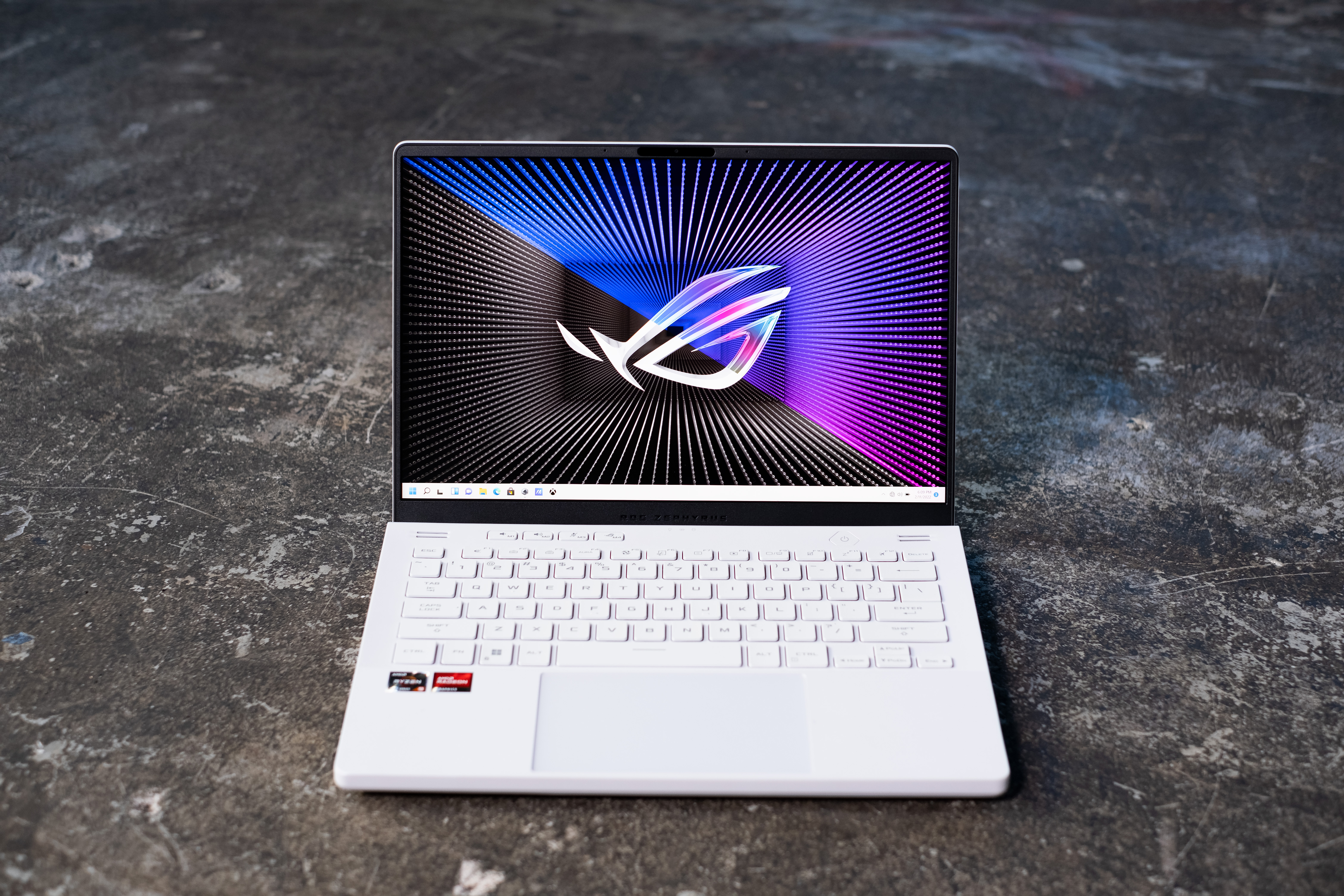
Pros
- Powerful CPU and GPU performance in a very compact design
- AniMe Matrix screams unique
- It has a webcam
Cons
- Half-permanent RAM
- Keyboard backlighting is subpar
The Asus ROG Zephyrus G15 is something of a rarity because of its compact form factor and powerful internals. It weighs just a little over three pounds, which makes it a capable traveling companion. It’ll also deliver reasonably fast performance thanks to the AMD Ryzen 9 6900HS CPU, the AMD Radeon RX6800S GPU, the 32GB of DDR5 RAM, and the 1TB of PCIe 4.0 SSD storage. These components are a phenomenal combination for heavy-duty design work. The keyboard isn’t the best, though, as it feels a bit soft and the backlighting is subpar. That said, when it comes to a combination of portability and fast performance, the Zephyrus G14 is a fantastic pick.
Asus ROG Flow Z13 – Best folio-style laptop
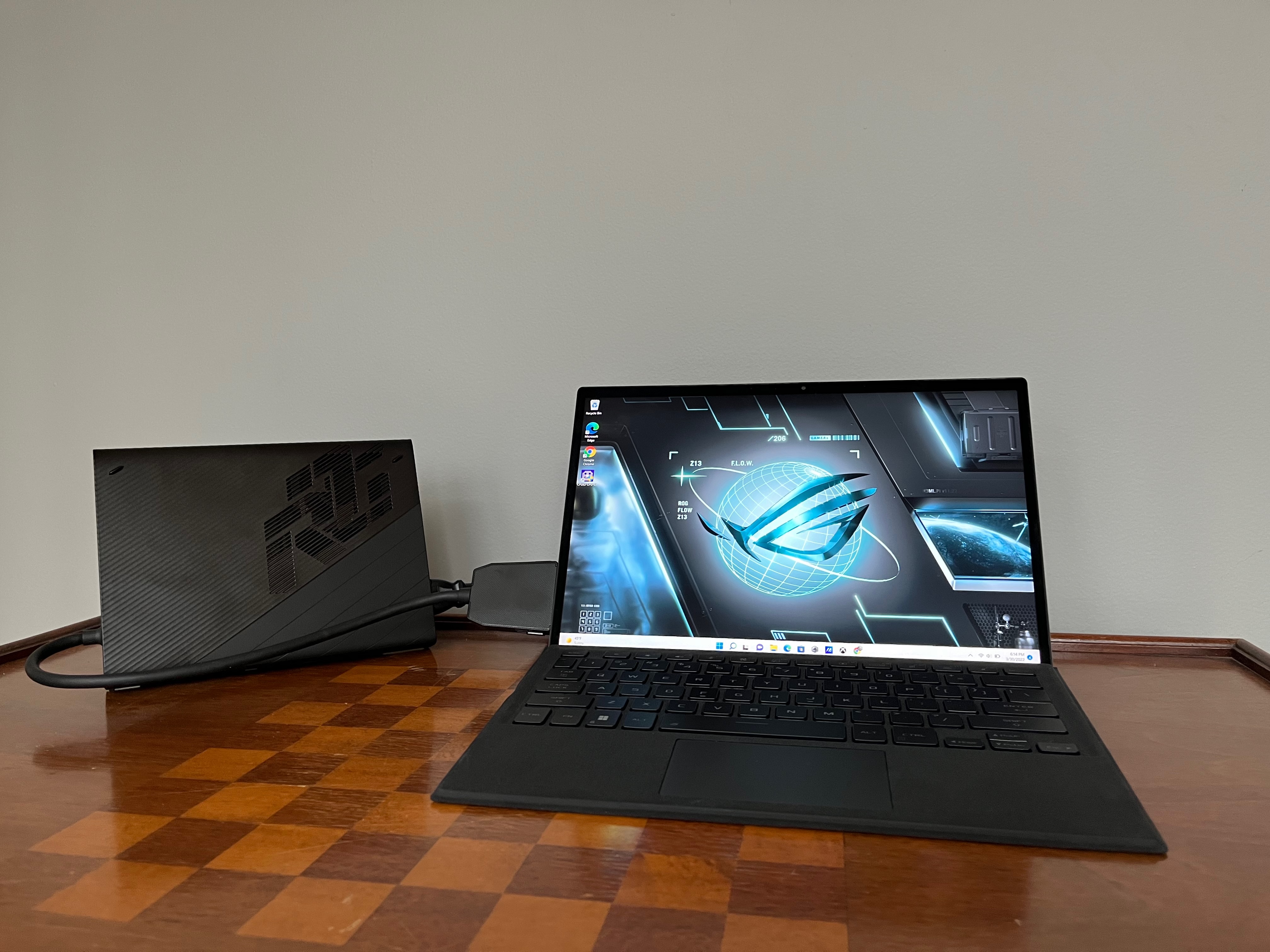
Pros
- Big performance in a small package
- Bright, crisp display
- Compatible with XG Mobile for GPU boost
Cons
- Versatility doesn’t come cheap
- Detachable keyboard poor fit for gamers
The Asus ROG Flow Z13 is one of the more unusual entries on this roundup. Simply put, it’s a folio-style gaming machine. You can pop open the kickstand on the back and voila! You’ve got a clamshell laptop. You can also remove the keyboard and use it as a touch-enabled tablet. The versatility here makes it a cool pick for creative work. As for the components, it’s rocking an Intel Core i9-12900H CPU, an Nvidia GeForce RTX 3050 Ti GPU, 16GB of RAM, and 512GB of PCIe NVMe M.2 SSD storage. It’s powerful, that’s for sure. The 1200p IPS touch display also produces sharp, vibrant images. This kind of versatility costs a premium though, so it’s not the most budget-friendly option. That said, if you’re looking for something truly unique, the Flow Z13 is well worth it.
How we tested
The G3 Box News team puts each and every Windows laptop through a series of benchmarks that test GPU and CPU performance, battery life, and so on. The idea is to push the laptop to its limits and then compare it against others we’ve tested. Below, you’ll find a breakdown of each test and the reasons why we run them.
Windows laptops
- PCMark 10: PCMark 10 is how we determine how well the laptop handles lighter tasks like web browsing, word processing, spreadsheets, and so on. Essentially, it’s how we simulate everyday use.
- HandBrake: HandBrake is more intensive than PCMark 10. It basically measures how long a laptop’s CPU takes to encode a beefy 30GB file.
- Cinebench: Cinebench is a brief stress test of the CPU cores. It does this by rendering a 2D scene over a short period of time. A CPU with multiple cores better divides the workload.
- 3DMark: 3DMark checks if 3D performance remains consistent over time by running graphic-intensive clips. We check for things like lag, screen tearing, and so on.
- Video rundown test: To gauge battery life, we loop a 4K video using Windows 10’s Movies & TV app until the laptop dies. If you travel a bunch, you’ll want something that’ll last more than a full work day.
Laptops for graphic design FAQ
Whether you’re designing advertisements or video games, the components inside your machine really matter. You’ll need a lot of RAM for those huge files and a high-functioning CPU that can handle the most power-hungry programs. You should also take display size and resolution into consideration. After all, there’s nothing more headache-inducing than squinting into a tiny display you can hardly see. The higher the resolution, the sharper the picture. Now, let’s get into the nitty-gritty, shall we?
How much processing power will I need?
If you’re just beginning a career in graphic design, go for an Intel Core i5 or i7 processor. If you work in video editing or motion design, we’d recommend an Intel Core i9. However, the number of cores is important for design work. That’s because the processor has to divide the workload when running a 3D-rendering program. A processor with four cores is the minimum requirement (in our book at least), but the more cores the better. As for AMD processors, the Ryzen 5 series is powerful enough for basic graphic design work. For more oomph, shoot for a Ryzen 9.
Do I really need a GPU?
For graphically intensive projects like 3D design, you’re going to want a dedicated graphics card. Fortunately, most gaming laptops have dedicated graphics and should be able chew right through those projects. If you’re looking to save some money, go for an Nvidia RTX 3060 or 3050 Ti. For a serious boost in graphics performance, we’d suggest springing for an Nvidia RTX 3080 Ti or an AMD Radeon RX6800S.
What about memory?
Graphic designers are constantly juggling a bunch of files, so you’re going to want at least 8GB of RAM to keep things relatively speedy. That’s the bare minimum, though. For bigger projects, 16GB of RAM should be plenty.
Should I spring for a hard disk drive or an SSD?
For those massive video editing projects, you’re definitely going to need a high-capacity SSD. 256GB is the minimum amount we’d recommend, but 512GB is obviously better. If you work with large files, you may want to even go for a 1TB+ SSD. Again, the right amount of storage really depends on the size and complexity of your project.
How big should my display be?
Ah, the display. It may be one of the most important aspects of a laptop, especially for design work. The size and resolution really depends on the complexity of your project, though. First, let’s talk about the size. Do you regularly commute into the office? If so, you’ll want a 13- or 14-inch display, as it’s smaller and more portable. If you’re working on high-resolution files or something that requires a lot of screen real estate, you’re going to want a 17-inch. However, the bigger the screen, the heavier the laptop will be. As for the resolution, don’t settle for anything less than 1080p. That’s the baseline you want to go for. If you can stretch your budget, a 4K display is lovely and the ideal option for creative work.
How long should my laptop last on a single charge?
If you plan on carrying around your laptop, you’ll want something that can last 10 to 12 hours on a single charge. That’s more than a full work day. However, battery size directly impacts the portability of the machine. The bigger the battery, the heavier the laptop.
How diverse should my port selection be?
A wide array of ports is always a good thing, as it eliminates the need for an adapter. You should get a laptop that has both USB-C and USB-A. An HDMI port is good, too. This is useful for hooking up to an external monitor, especially if the laptop’s display is dim or not as clear.
[ad_2] https://g3box.org/news/tech/the-best-laptops-for-graphic-design-top-picks-and-buying-advice/?feed_id=2908&_unique_id=62d597cc27c4c


0 comments:
Post a Comment